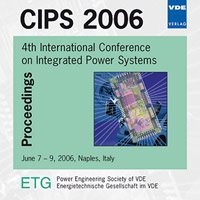Considerations on design and qualification of a high voltage isolation hybrid power module
Conference: CIPS 2006 - 4th International Conference on Integrated Power Systems
06/07/2006 - 06/09/2006 at Naples, Italy
Proceedings: CIPS 2006
Pages: 6Language: englishTyp: PDF
Personal VDE Members are entitled to a 10% discount on this title
Authors:
Casolino, Luca (Semikron Srl, Italy)
Abstract:
Probably the most important causes of reliability problems in soldered metallic base modules used in the industry and traction applications is the soldering interface between the substrate and the base plate of the module. This is because the surface area of this interface is very large with respect to the chip die area or power terminal soldering area, and there are large differences among the Coefficient of Thermal Expansion (CTE) of insulating material and base plate material. This often forces the utilization of special but expensive materials, especially for the base plate manufacturing, having a CTE very similar to the ceramic material used as insulator (typically Aluminium Nitride or Aluminium Oxide-Alumina), in particular Aluminium Silicon Carbide (AlSiC). But failures can not be related to this factor only: wire bond lift-off, die attach degradation, insulator cracking and power terminals detachment should also be evaluated. This article describes an alternative way to look at the problem, by showing how these considerations can influence the design in a real-case situation: a high insulation power module for use in railway auxiliary circuitry applications. The design reliability will be then verified by using the industrial standard stress tests to prove the assumptions.


